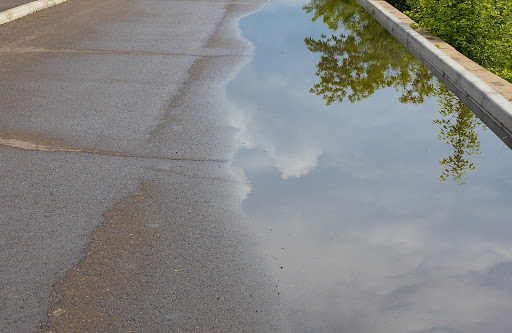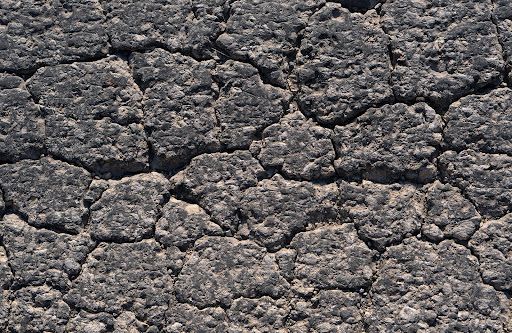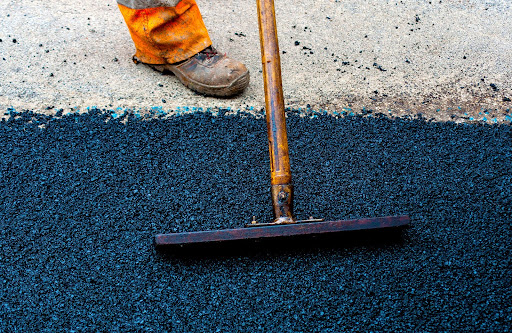
Standing water may seem like a minor nuisance, but left unresolved, it can lead to serious damage. From property erosion to asphalt deterioration, ignoring pooling water is a costly mistake.
Before you can correct standing water, you have to understand what’s causing it. In many cases, poor drainage design is the root of the problem. Whether it’s a sunken patch in a parking lot or improperly graded pavement, these issues prevent water from flowing where it should. Soil compaction, clogged drains, and heavy clay soils can also interfere with proper drainage.
Improper slope or surface grading is especially common in older lots or driveways. Water naturally follows the path of least resistance, and if your surfaces aren’t sloped correctly, that path could end in a puddle that never seems to dry.

The need to correct standing water goes beyond aesthetics. Water that lingers on pavement can weaken the surface over time. Asphalt and concrete are porous materials that can absorb moisture. When that moisture freezes and expands, it cracks the pavement, leading to potholes and further structural damage.
Standing water also attracts pests like mosquitoes and can be a slipping hazard for both pedestrians and vehicles. And if the problem is near a building, it could affect the foundation, especially during freeze-thaw cycles.
You might not always notice standing water immediately, especially if it forms after heavy rain and disappears within hours. But a few telltale signs can alert you to the need for intervention. Persistent damp areas, moss or algae growth, pavement softening, and water lines or stains are all indicators that your drainage is compromised.
In parking lots, areas where asphalt looks oily or has a wavy texture might be places where water has sat repeatedly. If left unaddressed, these signs can turn into major repair jobs.
Correcting standing water requires a clear, step-by-step approach tailored to the unique conditions of your property. Below are some of the most effective methods used to diagnose and fix standing water problems.
Not all pavement materials respond the same way to water. When correcting standing water, consider switching to or incorporating porous asphalt or concrete. These materials are designed to allow water to pass through the surface and into a stone recharge bed below, reducing surface runoff.
Geotextiles and sub-base materials also play a role in successful drainage. When repaving, make sure your contractor is using a layered approach that includes a well-compacted base and appropriate drainage layers.
DIY solutions can work for minor cases, but persistent problems often need a professional evaluation. A pavement or drainage contractor will have the tools to accurately assess grade, identify sub-surface issues, and propose long-term solutions to fix standing water.
Professionals also ensure that any corrections meet local building codes and environmental guidelines. For example, commercial lots may need specific permits for certain types of drainage systems.
Correcting standing water isn’t a one-and-done deal. Regular maintenance is key to keeping drainage functional. Clean drains regularly, inspect surfaces for settling or cracking, and keep vegetation trimmed back from drainage paths.
During winter, make sure snowmelt has somewhere to go. Ice dams and blocked drains can quickly bring back standing water problems even after you’ve made corrections.

If the standing water occurs on an asphalt surface, like a driveway or parking lot, the approach should be tailored to the material. Overlays, milling, and infrared patching can all help fix standing water on these surfaces.
Infrared patching, for example, allows you to reheat and rework the asphalt without a full replacement. This is useful for small dips or bird baths that collect water but haven’t yet caused significant cracking.
Once you’ve taken steps to correct standing water, it’s important to design for prevention. During any paving or landscaping project, ensure proper grading is part of the plan. Include multiple drainage points rather than relying on a single outlet. Use materials that promote drainage and install erosion control features if needed.
Educate property owners and managers about the early signs of water issues so they can respond quickly. Catching a minor problem before it becomes a major one is always the cheaper option.
Correcting standing water isn’t just about fixing a puddle—it’s about protecting your property, extending the life of your pavement, and ensuring safety. Don’t wait for the damage to spread. Take action to fix standing water issues today and keep your surfaces dry, stable, and safe.
Need to get rid of standing water on the road? Pothole Repair Carolinas offers puddle repair services around North and South Carolina. Call us today at 704-227-0468 or contact us online for more information!